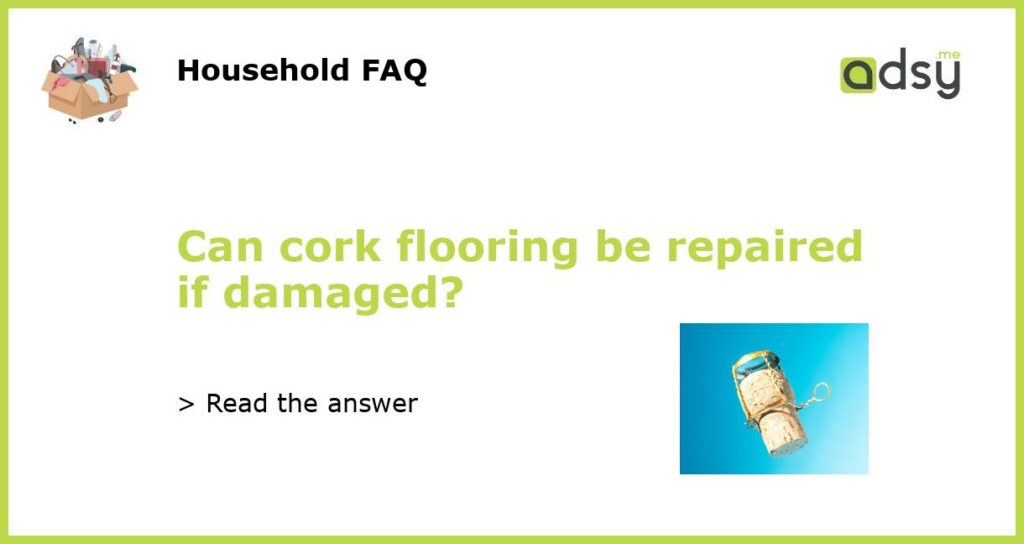Yes, cork flooring can be repaired if damaged
Cork flooring has gained popularity in recent years due to its natural beauty and eco-friendly qualities. However, like any other type of flooring, it is susceptible to damage over time. The good news is that cork flooring can be repaired if damaged, allowing you to prolong its lifespan and maintain its aesthetic appeal. In this article, we will explore the common types of damage that can occur to cork flooring and the repair methods that can be used to fix them.
Types of damage to cork flooring
There are several types of damage that can occur to cork flooring, including scratches, dents, stains, and moisture damage. Scratches may appear from heavy furniture, pets, or by simply dragging heavy objects across the floor. Dents can occur from dropping heavy items or through general wear and tear. Stains can result from liquid spills or incorrect cleaning products, while moisture damage can occur in areas prone to high humidity or water exposure.
Repairing scratches and dents in cork flooring
To repair scratches and dents in cork flooring, you will need to follow a few simple steps. For minor scratches, you can try using a touch-up kit specifically designed for cork flooring. These kits typically include a filler material that matches the color of the floor, allowing you to fill in the scratch and blend it with the surrounding area. For deeper scratches or dents, you may need to remove and replace the damaged cork tiles. This process involves carefully cutting out the damaged tile and replacing it with a new one. It is important to choose a replacement tile that matches the color and pattern of the existing flooring.
Removing stains from cork flooring
If your cork flooring has stains, it is important to address them as soon as possible to prevent further damage. The first step is to identify the type of stain and treat it accordingly. For organic stains such as coffee or red wine, you can try using a mixture of mild dish soap and warm water to gently scrub the area. For oil-based stains, you can use a solvent recommended for cork flooring. It is important to test any cleaning products on a small, inconspicuous area of the floor before applying them to the stained area. Avoid using abrasive cleaners or scrub brushes, as these can cause further damage to the cork.
Repairing moisture damage in cork flooring
Moisture damage can be one of the more challenging types of damage to repair. If your cork flooring has been exposed to excessive moisture and is showing signs of warping or discoloration, it may be necessary to replace the affected tiles. The first step is to identify the source of the moisture and address any underlying issues, such as plumbing leaks or excessive humidity. Once the cause of the moisture damage has been resolved, you can proceed with removing the damaged tiles and installing new ones. It is important to allow the new tiles to acclimate to the room’s temperature and humidity before installation to prevent future damage.
Maintaining and preventing damage to cork flooring
While cork flooring can be repaired if damaged, it is always best to take preventative measures to maintain its appearance and longevity. Place protective pads under furniture legs to prevent scratches, and use rugs or mats in high-traffic areas to minimize wear and tear. Clean up spills immediately to prevent staining, and use a pH-neutral cleaner specifically designed for cork flooring to remove dirt and grime. Avoid exposing cork flooring to excessive moisture, and ensure proper ventilation in areas prone to high humidity.






